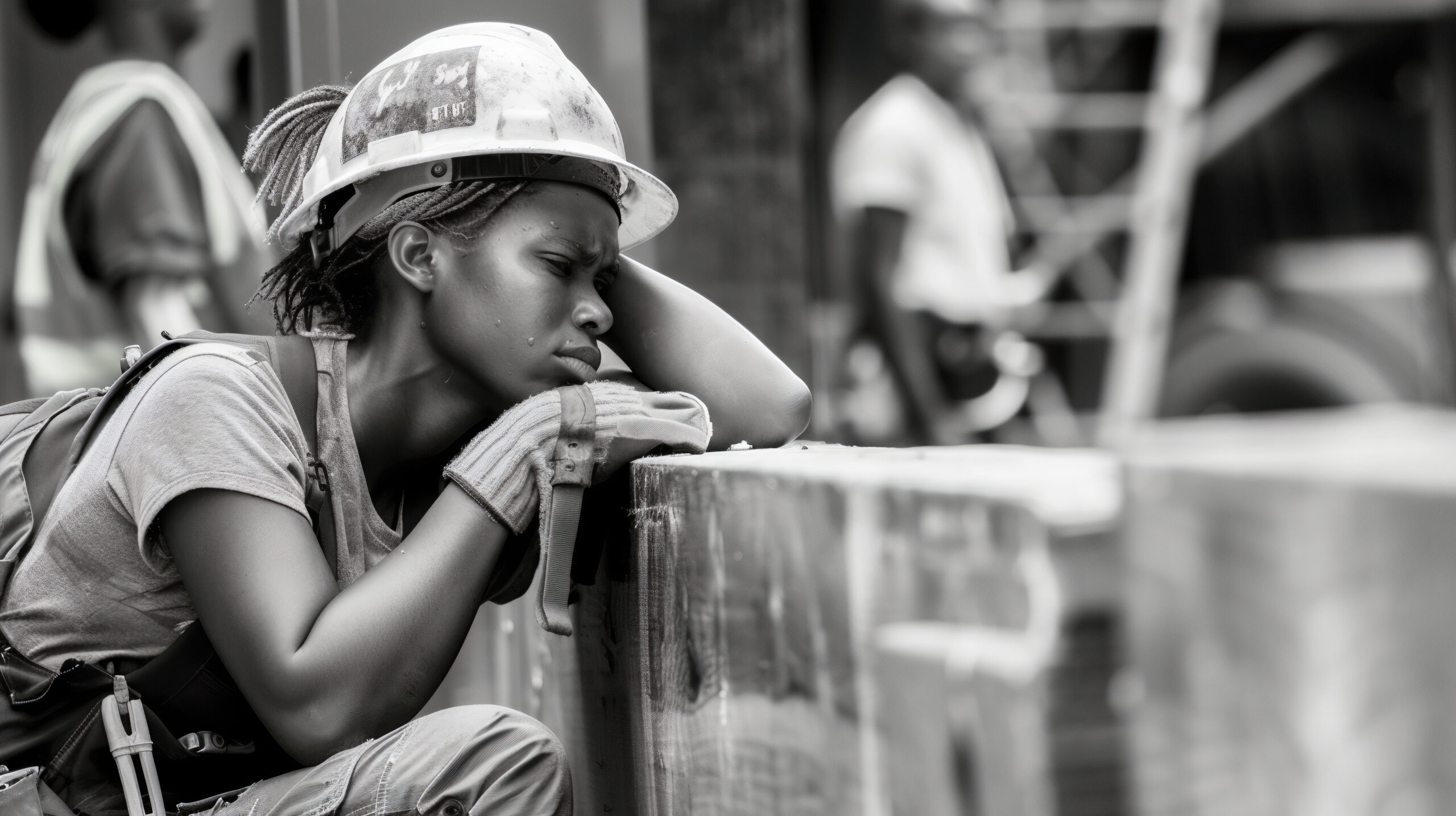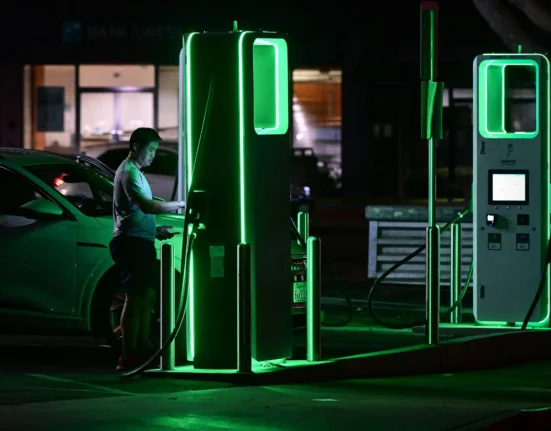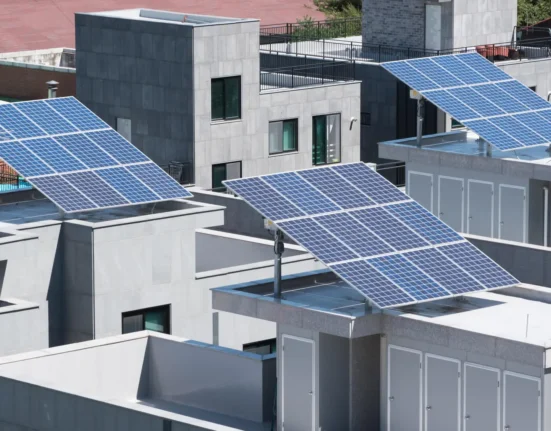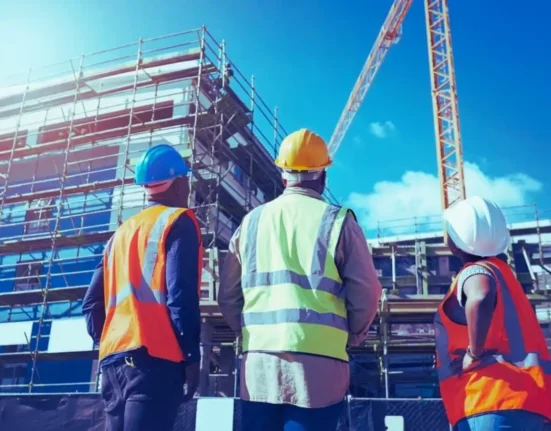Have you ever wondered how construction workers manage to stay safe when working in extreme heat or freezing cold? How do they prevent heat stroke in the scorching summer or frostbite in the bitter winter? Working in extreme weather conditions is a major challenge for construction workers. But what if there were proven strategies to safeguard your health while still being productive in these harsh conditions?
The Risks of Working in Extreme Heat and Cold
Construction work is physically demanding, and the weather can be an added challenge. Whether it’s the scorching heat of summer or the freezing temperatures of winter, working in extreme conditions poses serious risks to workers’ health and safety.
In extreme heat, construction workers are at risk of heat exhaustion, heat stroke, dehydration, and sunburn. On the other hand, in cold weather, workers may suffer from frostbite, hypothermia, and other cold-related injuries. But how can you, as a construction worker, stay safe while working in such harsh conditions?
This article will provide actionable tips and best practices for working safely in extreme heat and cold, ensuring that you can protect your health, prevent injuries, and maintain productivity throughout the year. By implementing these strategies, you can stay safe, comfortable, and focused on your tasks, no matter the weather.
The Dangers of Extreme Heat and Cold in Construction
Before diving into safety tips, it’s essential to understand the dangers that extreme temperatures pose to construction workers.
Heat-related Dangers
Working in extreme heat can lead to a range of health issues, some of which can be life-threatening if not addressed quickly. These include:
- Heat Exhaustion: Characterized by excessive sweating, dizziness, and fatigue, heat exhaustion occurs when your body becomes overly heated.
- Heat Stroke: A more severe condition, heat stroke happens when your body loses the ability to regulate temperature. Symptoms include confusion, loss of consciousness, and rapid pulse. Without treatment, heat stroke can be fatal.
- Dehydration: When you’re working in the heat, your body loses a significant amount of water through sweat, which can lead to dehydration and increase the risk of heat-related illnesses.
Cold-related Dangers
In cold weather, workers face their own set of challenges. Exposure to freezing temperatures can cause:
- Frostbite: The freezing of skin and tissue, usually affecting extremities like fingers and toes, can lead to permanent tissue damage if not treated immediately.
- Hypothermia: This occurs when your body temperature drops below the normal range, causing symptoms like shivering, confusion, and numbness. Hypothermia can be deadly if not addressed promptly.
- Trench Foot: Prolonged exposure to cold, wet conditions can cause swelling and numbness in the feet, leading to trench foot, a condition that can cause permanent tissue damage if untreated.
How to Safely Work in Extreme Heat: Tips for Construction Workers
When working in extreme heat, construction workers must be extra vigilant about their health and well-being. Here are practical tips to ensure safety on hot days:
1. Stay Hydrated
Hydration is critical when working in high temperatures. Dehydration can impair your ability to think clearly, cause fatigue, and increase your risk of heat stroke. Follow these hydration tips:
- Drink plenty of water throughout the day, even before you feel thirsty.
- Avoid sugary drinks, caffeine, or alcohol, as they can cause dehydration.
- Keep a water bottle with you and take regular sips.
2. Wear Appropriate Clothing
Dressing properly in the heat can make a big difference in staying cool and protecting your skin:
- Wear light-colored, loose-fitting clothing made of breathable fabrics like cotton or linen.
- Use a wide-brimmed hat to protect your face and neck from direct sunlight.
- Apply sunscreen with a high SPF to exposed skin to prevent sunburn.
- Use UV-protective sunglasses to shield your eyes from the sun’s harmful rays.
3. Take Regular Breaks
It’s essential to take regular breaks when working in extreme heat to avoid overexertion:
- Take frequent breaks in a cool, shaded area, especially during the hottest part of the day.
- Resting every 20 to 30 minutes can help keep your body temperature in check.
- Use a fan or cold compress on your neck and wrists during breaks to cool down quickly.
4. Monitor Your Body for Heat-Related Illnesses
Be aware of the signs of heat exhaustion and heat stroke. If you experience dizziness, nausea, or confusion, take immediate action to cool down.
- Move to a cooler place and drink water.
- If symptoms of heat stroke appear (e.g., confusion, rapid breathing), seek medical attention immediately.
5. Use Cooling Gear
There are various cooling products available to help workers combat extreme heat, such as:
- Cooling vests that retain moisture and evaporate it slowly to keep your body temperature cool.
- Portable cooling fans or neck fans that can help you stay comfortable throughout the day.
Tip for Employers: Ensure your construction site has access to shaded areas, water stations, and cool rest spots for workers.
Learn more about heat safety on the job site
How to Safely Work in Extreme Cold: Tips for Construction Workers
Working in cold weather presents a different set of challenges for construction workers. Here are essential tips for staying safe during winter months:
1. Layer Your Clothing
Dressing in layers is the most effective way to stay warm and dry during cold weather:
- Wear moisture-wicking base layers to keep sweat off your skin.
- Add insulating layers to retain heat, such as wool or fleece.
- Use waterproof outer layers to protect against snow, rain, and wind.
2. Protect Your Extremities
Hands, feet, and ears are especially vulnerable in cold conditions:
- Wear thermal gloves and wool socks to prevent frostbite and keep your extremities warm.
- Use insulated boots to keep your feet dry and warm, preventing frostbite.
- Wear ear protection to shield your ears from the cold wind.
3. Stay Active
Staying active helps keep blood circulating, preventing your body from cooling down:
- Move regularly to keep your muscles active and prevent stiffness.
- Take breaks to walk around if you’ve been standing still for a long time.
4. Avoid Working Alone
When working in freezing conditions, always have a buddy system in place:
- It’s essential to have someone nearby to help if you experience symptoms of hypothermia or frostbite.
- Always check in with coworkers during breaks to ensure everyone is safe.
5. Monitor Weather Conditions
Pay attention to the weather forecast and plan your work accordingly:
- Avoid working outside if temperatures dip too low or if there’s a snowstorm.
- Be aware of wind chill factors, as they can make the temperature feel much colder than it actually is.
Tip for Employers: Ensure that workers have access to heated rest areas and that the site is cleared of any snow or ice hazards.
Learn more about cold weather work safety
Prioritize Safety in Extreme Weather Conditions
Working in extreme heat or cold can be dangerous, but with the right precautions, construction workers can protect their health and continue working safely. Hydration, proper clothing, regular breaks, and monitoring body temperature are key strategies for managing heat, while layering, protecting extremities, and staying active are essential for cold conditions.
Construction companies and workers must prioritize safety at all times, ensuring that all employees are equipped with the knowledge and resources they need to work effectively and safely. By following these tips and being proactive about safety, workers can minimize the risks associated with extreme weather conditions and stay productive throughout the year.
Read more tips at Trivardepci.com












Leave feedback about this